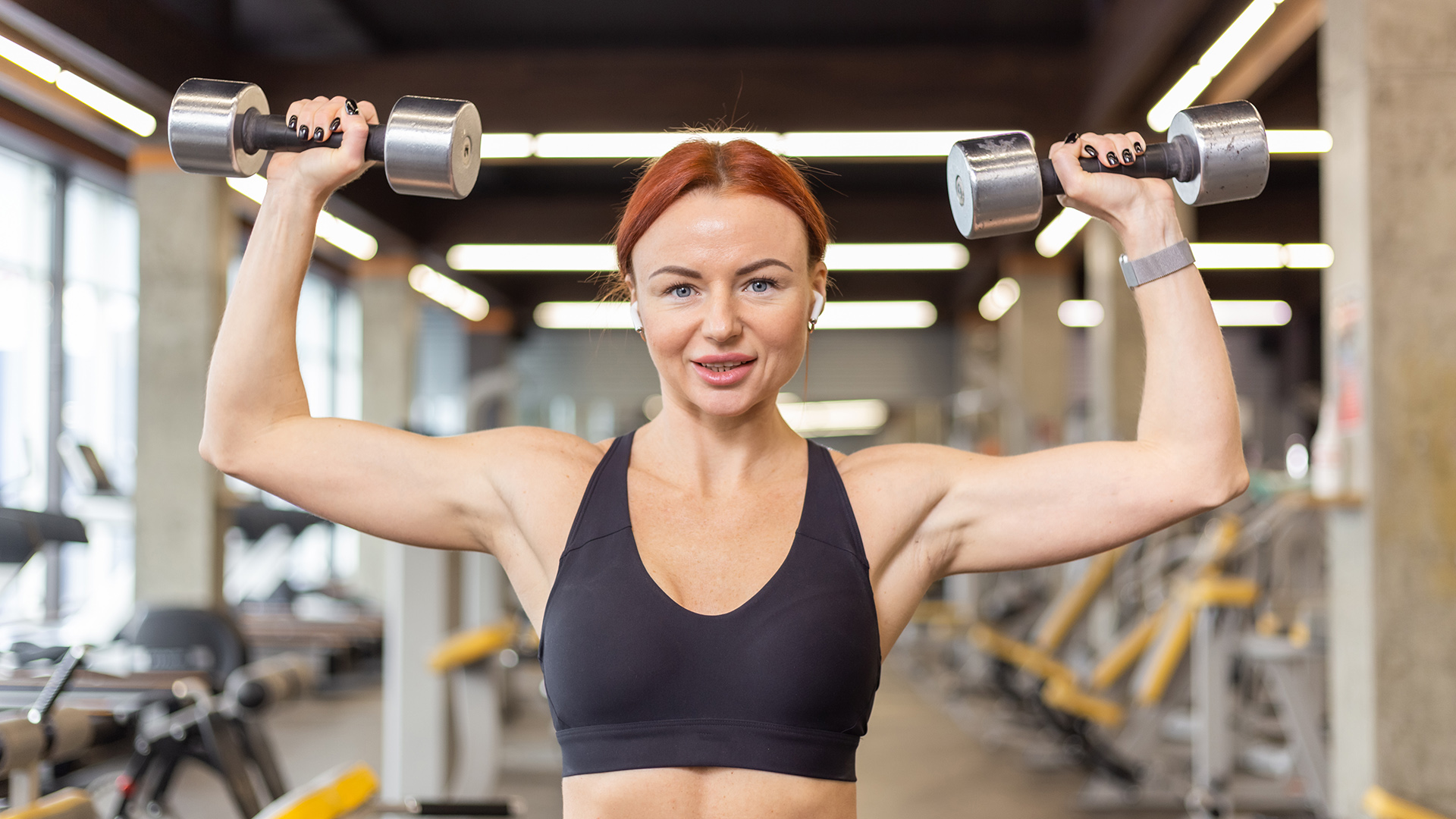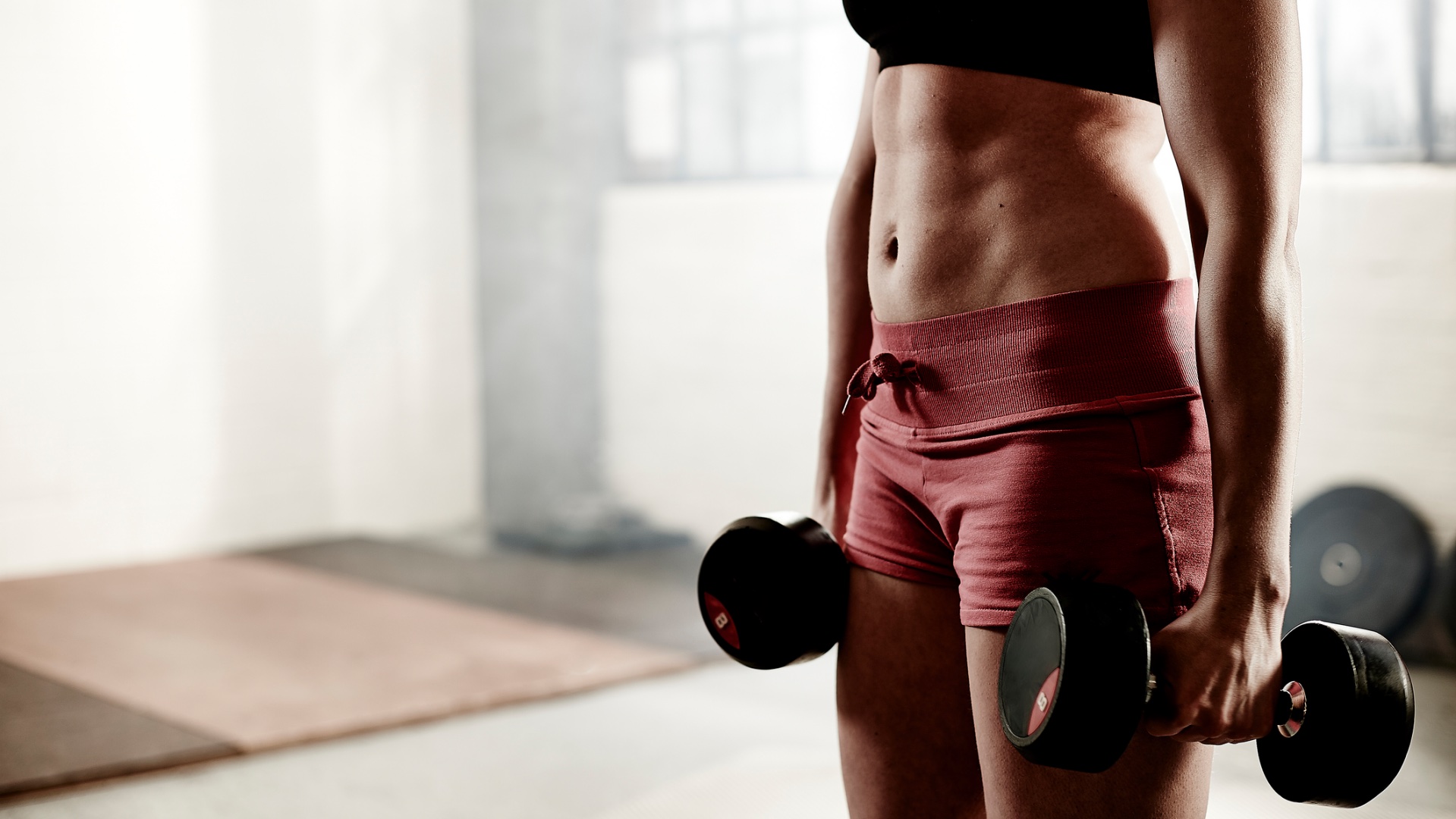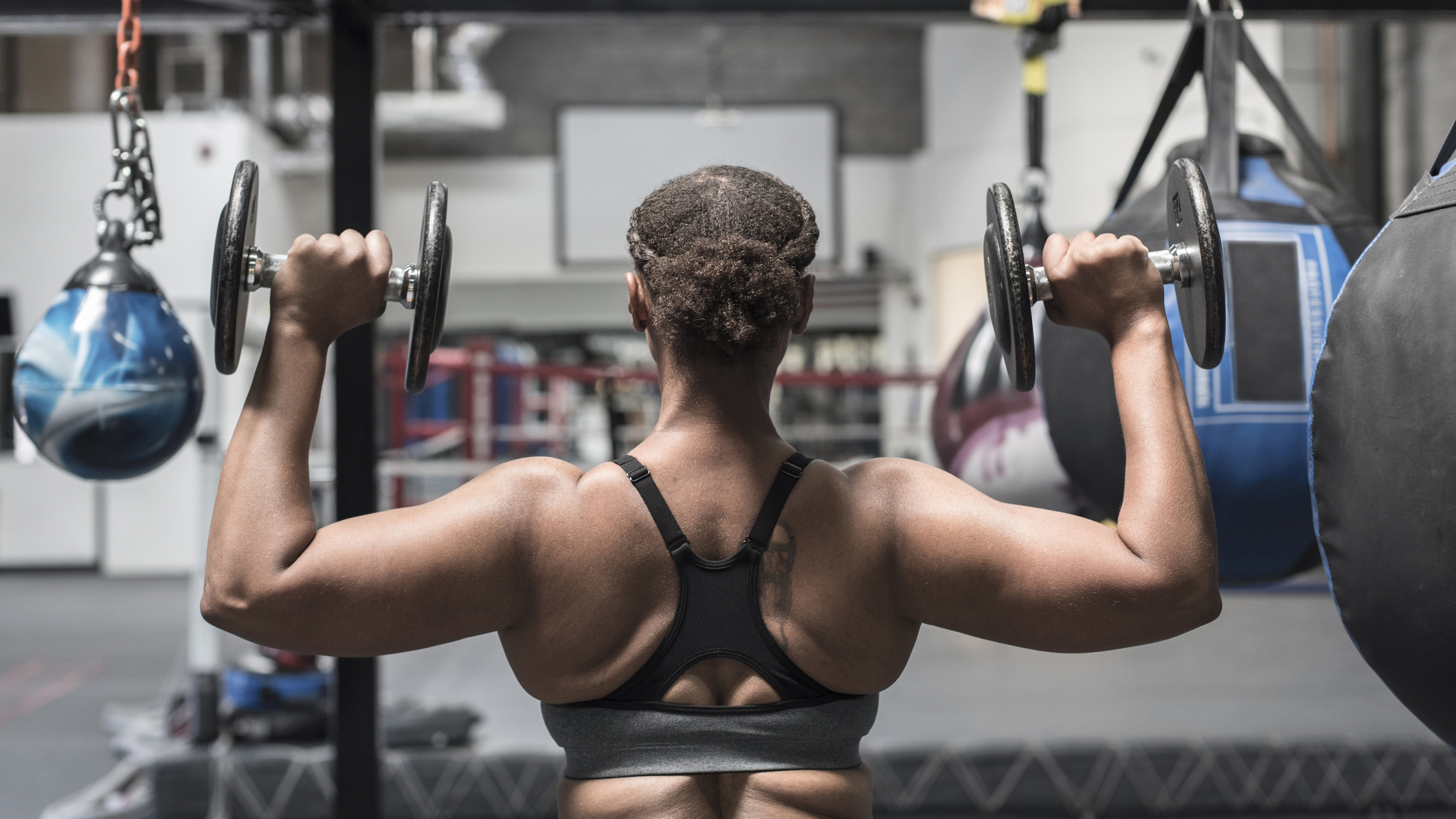

After killing my arms by doing 100 bicep curls every day for a month, I realised it was high time I turned my attention to my shoulders in my quest to get Linda Hamilton-esque arms circa Terminator 2. And what better place to start that process, I thought, than with the overhead press?
The overhead press, also called the shoulder press or straight press, is one of the best shoulder exercises around to build the size and strength of your shoulders and involves pushing some form of resistance above your head by extending your arms upwards from the shoulders.
Sounds easy, but there’s a lot that can go wrong with this exercise - especially if you don’t perform it with the correct form, use a weight that’s too heavy, have some kind of shoulder injury, or don’t have excellent shoulder mobility - as I found out to my own detriment. So, without further ado, here’s what happened when I tried to do 100 overhead press exercises a day for a whole week.
What are the benefits of the overhead press?
The overhead press recruits the deltoid muscles of your shoulders, specifically the anterior deltoid at the front of the shoulder. As an effective upper-body compound move, it also works your chest (pectorals), upper back (trapezius), and the back of your arms (triceps).
If you perform the overhead press standing up – as opposed to sitting down with your back supported – you will also need to recruit your core muscles, such as the obliques, transverse abdominal muscles, lower back, and spinal stabilizers, to help you maintain your balance and stability.
As with any weight baring activity, lifting heavy loads can help you to strengthen your bones as well as your muscles, increasing your bone density over time to reduce the risk of osteoporosis.
Regularly incorporating the overhead press into your workouts will help you to keep your upper body in shape, counteract the effects of slouching and bad posture, and assist you with daily tasks such as placing objects on a shelf or high cabinet.
Sign up to the T3 newsletter for smarter living straight to your inbox
Get all the latest news, reviews, deals and buying guides on gorgeous tech, home and active products from the T3 experts
Additionally, it can help you to perform other exercises, such as a push-up or bench press while improving your sporting performance and making you less likely to pick up injuries.
How to do the overhead press
There are many variations of the overhead press, and they all have their pros and cons. For this article, we are focusing on the standing overhead press with dumbbells, for which you’ll need a pair of the best dumbbells.
- Holding a dumbbell in each hand, stand upright with your feet positioned shoulder-width apart.
- Keeping your core braced, back straight, and knees slightly bent, raise the dumbbells to shoulder height using an overhand grip so your palms face forwards, thumbs are on the inside, and your knuckles face up. This is the starting position.
- Exhale, then press the dumbbells up above your head in a controlled motion until your arms are fully extended, but not elbows. Avoid pressing the dumbbells together as this could impinge on your shoulder.
- Pause briefly at the top of the movement, then inhale as you slowly return the dumbbells to shoulder height.
- Avoid arching your back or leaning backwards. If either happens, you should swap to lighter dumbbells.
I did 100 overhead presses a day for a week – Here's what I learned
1. Go slowly if you have a shoulder injury
Believe it or not, many years ago, I used to work as a scaffolding labourer (scaffolding is a family thing, and I got roped in). Unsurprisingly, I built up some crazy strength in my shoulders from constantly pushing scaffolding tubes and boards upwards (or pulling them up by rope) and climbing ladders one-handed with big buckets of scaffolding fittings on my shoulder.
The downside was that I totally overworked my right shoulder – sports masseuses regularly point out the difference in size between my left and right delts – and I developed a shoulder impingement, which still twinges from time to time and wakes me up at night if I fall asleep on my right side.
The point is this: shoulders aren’t as tough as they seem. In fact, they are one of the most commonly injured joints in the body because they have the greatest range of motion but the least stability, which makes them more susceptible to strain and repetitive injury.
So, if you’re injury-free, start with a lighter weight and build up gradually. If you have an existing shoulder injury, seek approval from a medical professional before attempting an overhead press - and maybe don’t attempt this challenge of 100 overhead presses a day.

2. Choose your equipment carefully
As a result of the muscle imbalance in my shoulders, the barbell overhead press is out for me right now. That’s because when you have one side that’s stronger than the other, your stronger side can often overcompensate for your weaker side when using a barbell.
Equally, using dumbbells instead of a barbell can allow your arms and shoulders to follow a more natural path of movement, thereby reducing the risk of potential injury. And of course, dumbbells are a lot more accessible and can easily be used in the home.
That said, if you’re looking for serious strength and size gains in the shoulder department, using a barbell can be a better choice, namely because you can often lift much heavier loads.
3. Doing the same exercise gets boring
By day four, I was pretty bored of basic overhead presses, so I decided to spice things up with the Arnold Press – named after the king of bodybuilding, Arnold Schwarzenegger - which is a much better exercise for all-around shoulder definition.
This is because it adds a rotation in the movement which helps to hit all three heads of the shoulder: the front (anterior deltoid), middle (lateral deltoid), and back (posterior deltoid), and I found focusing on the rotation of the movement and my form really helped to break up the monotony.
I also threw in a few sets of my usual dumbbell squat to overhead press exercises to feel like the rest of my body was getting a look in and even tried alternating my arms with the basic overhead press because it apparently helps to better activate the core muscles.

4. There’s safety in numbers
I’m not talking about needing lots of people around you when doing the overhead press (although having a spotting partner can be useful if you’re going really heavy in the gym).
Rather, I’m talking about why it can be a good thing to stick to the recommended number of reps and sets that qualified exercise coaches and PTs suggest if you want to weight train for increased strength and hypertrophy (muscle growth gains)
For hypertrophy, this usually means 3 to 4 sets of 6 to 12 reps, using a heavier weight, while training for muscular endurance usually involves doing 2 to 3 sets of 12 to 20 reps, often using a lighter weight to help you complete all the reps with good form.
Moreover, these sessions are usually split across a training week, with rest days in between workouts to allow the muscles to recover, repair, and come back stronger (with the aid of a nutritious diet).
Clearly, doing 100 reps of an overhead press every day for a week is way beyond the usual tried-and-tested strength training advice, and you should know that going against this advice and pumping out more reps doesn’t necessarily equal bigger, faster strength and size gains.
By the end of the week, I couldn’t see any difference in the appearance of my shoulders (I never expected to). But what I did have was incredibly sore shoulders and a lot of pain in my right shoulder. Put it this way, I’ll be resting up for a few weeks before attempting my usual reps and sets three times a week.
Jo is a London-based freelance journalist and content creator specialising in fitness, health, lifestyle and beauty. With a degree in Journalism, Film & Broadcasting from Cardiff University and almost 20 years’ experience in the industry, she interviews celebrities and Olympians for a living, while testing out the latest beauty, hair, wellness and fitness gadgets. As a Level 3 Personal Trainer and author of several fitness guides, she gets to try the coolest workouts while reviewing active travel destinations and writing investigative features about the wonderful world of wellbeing for many of the UK’s top magazines, newspapers and digital publications. When she’s not sitting at her laptop, Jo likes exploring new walking spots with her beagle, gardening, and DIY. She is also one of the few people on the planet still obsessed with what’s coming up in Phase 5 of the Marvel Cinematic Universe.